This is a KW Reflex Box, a single lens reflex box camera made by Kamera-Werkstätten Guthe & Thorsch in Dresden, Germany between the years 1933 and 1938. The KW Reflex Box was an early form of a Spiegelreflexkamera which put a moving reflex mirror and waist level viewfinder inside of a wooden box and shot 6cm x 9cm images on regular 120 roll film. Cameras like these were fairly common in the era before the modern SLR was invented. Although the camera does not have an interchangeable lens mount, many different lenses were available on these cameras throughout their production.
Film Type: 120 Roll Film (eight 6cm x 9cm exposures per roll)
Lens: 10.5cm f/6.3 K.W. Dresden Reflex-Box Anastigmat uncoated 3-elements
Focus: 1.5 meters to Infinity
Viewfinder: Waist Level Coupled Reflex Viewfinder
Shutter: Reflex “Guillotine” Shutter
Speeds: B, 1/25 – 1/100 seconds
Exposure Meter: None
Battery: None
Flash Mount: None
Other Features: Bubble Level (on up-level model only)
Weight: 864 grams
Catalog (in Italian): https://www.pacificrimcamera.com/rl/01650/01650.pdf
How these ratings work |
The KW Reflex-Box is an early camera that is half SLR/half camera. With a simple three speed guillotine shutter and a basic anastigmat triplet, this camera produces vintage looking images with soft edges and heavy vignetting. The design of the shutter causes a tremendous amount of body shake that will cause blurred images if you do not stabilize the camera properly. Despite these precautions, it is a very cool camera, that’s easy to use, and produces images unlike many others. | ||||||
| Images | Handling | Features | Viewfinder | Feel & Beauty | History | Age | |
| 1 | 1 | 1 | 1 | 2 | 1 | 40% | |
| Bonus | none | ||||||
| Final Score | 9.8 | ||||||
History
 KW was founded in Dresden, Germany in 1919 by Paul Guthe and a Swiss businessman named Benno Thorsch as Kamera-Werkstätten Guthe & Thorsch. Guthe had previous experience in camera manufacturing, owning another camera factory in the Dresden area that he founded a few years earlier in 1915.
KW was founded in Dresden, Germany in 1919 by Paul Guthe and a Swiss businessman named Benno Thorsch as Kamera-Werkstätten Guthe & Thorsch. Guthe had previous experience in camera manufacturing, owning another camera factory in the Dresden area that he founded a few years earlier in 1915.
At the time of KW’s inception, there was already a great number of camera makers in Germany, many of which made some of the same basic folding and box designs over and over. Perhaps as a way of standing out amongst the crowd, KW differentiated themselves by coming up with clever designs that weren’t like what their competitors were making.
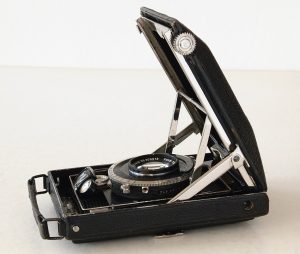
KW’s first product was a folding camera called the Patent Etui. It had an extremely slim and compact body that was quite a bit smaller than comparable cameras of the time. There were versions made for 6.5cm x 9cm sheet film and some that used 9cm x 12cm film. The Patent Etui had an innovative and unique design that was unlike any other camera made at the time, or even in the years that would follow. Innovation would become a hallmark of KW’s legacy, setting a standard for new and creative designs and features in many of their models to come.
The Patent Etui was in production throughout the 1920s at a time when the German economy was very weak due to the outcome of World War I. Many German companies would either collapse or merge with other companies during the 1920s. In 1926, four Dresden area companies would all merge together to form one single company that would be called Zeiss-Ikon.
But not KW, they were one of the few Dresden optics companies that saw great success. So much so that in 1928, KW moved from it’s original location in Niedersedlitz to a larger facility in Dresden, right down the street from Zeiss-Ikon’s factory. KW employed at least 150 employees and the company’s output at this time was around 100 cameras a day.
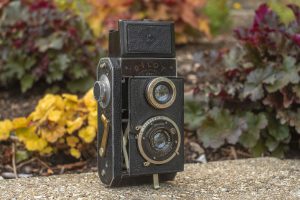
In 1931, KW released another innovative camera with an all new design called the Pilot. This new camera was a folding Twin Lens Reflex design that took 3cm x 4cm images on “Vest Pocket” 127 roll film. The Pilot combined the best features of a TLR like the Rolleiflex and a folding camera that when collapsed was much smaller and portable.
Following that original Pilot model, KW would release two more in the series, a Pilot Six and Pilot Super, which were both medium format SLRs that shot 6cm x 6cm film on 120 format roll film. These cameras would be the first two of three medium format SLRs the company would produce prior to the war, but were expensive and likely sold poorly.
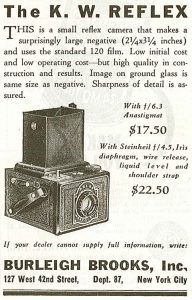
The third model, simply called the KW Reflex-Box was released shortly after the two Pilot SLRs. In my research for this article, I struggled to come up with the exact year it was made as most sources online suggest it was 1933, but I found no evidence of the camera for sale until around 1937-38. While 1933 certainly seems plausible based on the design of the camera, I can’t with absolute confidence conclude that it was the year it first went on sale.
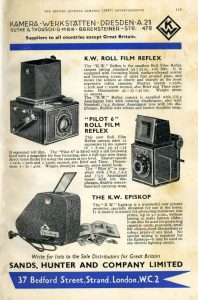
Each of the two ads to the left and right are both from 1937, the one on the left from the British Journal of Photography and the one on the right from a Burleigh Brooks advertisement.
Both the British and US ads for the camera reference two lens options, a f/6.3 Anastigmat lens with a Waterhouse Stop style diaphragm for $17.50 and an f/4.5 Steinheil Actinar Anastigmat lens with iris diaphragm for $22.50. These two lenses appear to be the only options for the American and possibly British market. as other lenses, such as those from Enna Werke and an unbranded f/4.5 Reflex Box Anastigmat lens have also been found, possibly sold in other markets.
In addition to the better lens and iris, the upgraded model also received a spirit bubble level, a flexible wire release, and leather shoulder strap making it a compelling upgrade for only a few bucks more. Of course, “bucks” were worth a lot more back then then they are today, as when adjusted for inflation, these prices compare to around $340 and $440 today.
Billed as the smallest Roll Film Reflex camera that makes 6cm x 9cm images, the Reflex Box was essentially a wooden box camera, equipped with a guillotine style shutter, reflex mirror, and waist level ground glass viewfinder. The camera’s option was very simple, containing only three shutter speeds, both of which were achieved by stretching a long spring a pre-determined length to increase the speed that the shutter opens and closes, when selecting a speed.
Very little documentation for the KW Reflex-Box exists, so finding more specifics about how the camera might have been marketed, and in what years was difficult. The Italian language three page brochure below was all that I could find in reference to the camera. Brochure images below courtesy, Pacific Rim Camera’s Reference Library.
It seems that as swiftly as the KW Reflex-Box came, it also went, as by 1939, the camera no longer appeared to be for sale. While an economically priced medium format SLR might have still had some appeal after the war, the presence of much nicer 35mm SLRs and other more compact cameras likely made it a tough sell.
Whatever the exact history truly is for the Reflex-Box, it definitely was made, and as one of the few box cameras with a reflex mirror and waist level viewfinder, it remains a curious piece of history.
Today, whether you are interested in prewar German cameras, early SLRs, or just strange and unusual designs, the KW Reflex-Box offers a lot for the collector. If you want to try and use one, the camera’s simple construction suggests that most should still be usable today, as long as it is hasn’t sustained physical damage over the years. Not many of these cameras were made and they don’t often show up for sale, but when they do, they make an excellent addition to any collection.
My Thoughts
The earliest reflex cameras share very little in common with modern SLRs, other than the same principle of being able to compose your image through the taking lens. Many examples of early SLRs, like the Kochmann Reflex-Korelle have shutters that no longer work, or use a style of film that I don’t easily have access to.
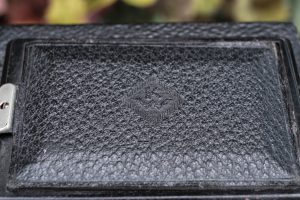
The KW Reflex-Box is probably one of the most usable early roll film SLRs as it’s guillotine shutter is so basic, there’s very little to go wrong with it. Apart from physical damage, if you come across one of these, there is a very good chance it will work. I found this one to be missing it’s infinity stop on the lens, meaning that if I focused it too close, the lens would fall off the camera. So as long as I paid attention to what I was focusing on, it shouldn’t be a problem. I also noticed that the slowest of the three shutter speeds didn’t fire, and the medium speed was erratic and sometimes wouldn’t completely fire, but the fast speed did, so I figured that was good enough.
The name of this camera is the Reflex-Box which is very appropriate as it’s literally a reflex box camera. If you had never seen this camera before and were asked to imagine what a box camera with a reflex mirror and waist level finder would look like, you’d likely picture a camera looking much like this in your head.
The Reflex-Box is made entirely of metal, and with the reflex innards and large piece of ground glass, at a weight of 864 grams it weighs a bit more than a typical box camera. It’s by no means heavy, but you’d likely never forget you were carrying it around.
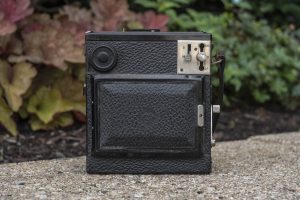
Most of the camera’s interesting parts are on it’s top plate. A folding hood covers the life size ground glass viewfinder, a round knob in the upper left corner advances film through the camera, and two sliders inside of a metal plate in the upper right corner control the shutter.
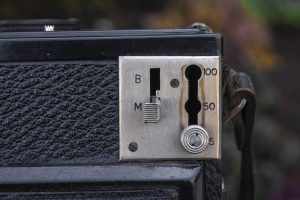
The slider on the right selects between one of three shutter speeds, 1/25, 1/50, and 1/100. The slider on the left is both the shutter release and chooses between Instant (M) and Bulb (B) settings. It is easy to accidentally fire the shutter while moving this slider, so I recommend making your choice before cocking the shutter.
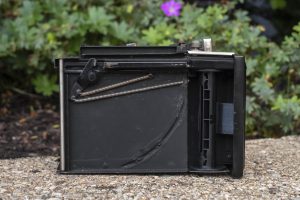
The shutter on the Reflex-Box is very simple, and it’s speed is controlled by the second slider which is connected to one of the two long springs seen in the image to the left. In this image, the shutter is already cocked, and the speed is set to 1/25. Cocking the shutter pulls back on the longer of the two springs, providing tension on the shutter which springs back to it’s original position when the shutter release is pressed. Changing the shutter speed from 25 to 50 to 100, pulls on the shorter of the two springs. This second spring provides additional tension on the cocked shutter increasing the force at which it opens and closes when the shutter release is fired. With the shutter at 1/25, only the long spring pulls it shut, at 1/50, the long spring and the short spring with partial tension pulls it shut, and at 1/100, both springs at full tension pull it shut.
The gallery below shows both sides and the back of the camera. On each side of the camera are lugs for a neck or shoulder strap and two metal clips that wrap around to the front of the camera to hold the film compartment shut. On the camera’s right side is a leather wrist strap and the shutter cocking lever.
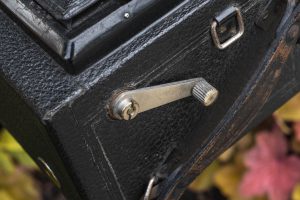
The shutter cocking lever works exactly as you’d expect it to. Simply push down on the lever as far as it will go to pull the two springs shown earlier in this article to cock the shutter. After cocking the shutter, the lever will return to it’s original position on it’s own, so there is no risk of it flying up and hitting your hand while firing the shutter.
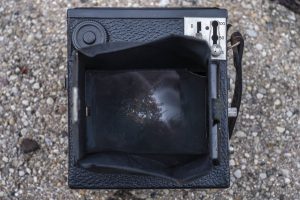
The viewfinder hood lifts up and automatically pulls with it folded leather sides which help block out unwanted light from hitting the focusing screen. Despite a lot of shade, the viewing screen is still very dark.
This particular example had a mirror that exhibited a lot of desilvering, so it is likely that with a new mirror, brightness could be improved, but probably not by much as all 1930s SLRs usually had pretty dark focusing screens, regardless of the condition of the mirror.
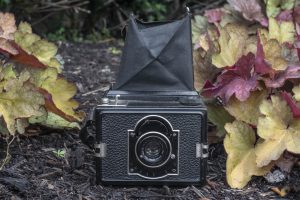
Up front, the lens is focused by rotating the entire front element group. Normally, there should be an infinity stop to prevent the lens from going beyond it’s range, but that part was missing on this one. This camera having the slower f/6.3 K.W. Dresden Reflex-Box Anastigmat does not have a traditional iris, and uses a metal plate with circular holes, similar to Waterhouse Stops on some early cameras. Move the curved slider above the lens to one of the four positions between f/6.3 and f/16 to select an appropriate aperture. Because of how this diaphragm works, in between selections are not allowed as it would cause each hole to not line up with the lens correctly.
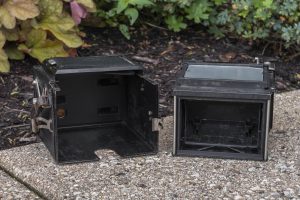
Puling back on both clips on the front sides of the camera, allows you to pull the entire back and sides off the camera, revealing the film compartment.
Here is where the Reflex-Box shows it’s box camera roots as loading film is very similar to other 6×9 box cameras. A new roll of film goes into the chamber on the right onto a take up spool on the left. Stretch the film backing paper around both rollers on each corner, across the film plane and onto the take up spool, and then slide the back onto the camera to close it. Make sure you securely attach both clips to prevent the camera from accidentally opening.
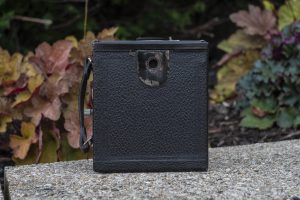
The KW Reflex-Box has no light seals of any kind which is a problem as the front edge of the camera is also where the film spools are, greatly increasing the chances of light leaks. The all metal design of the camera also means that if the camera is ever dropped or bumped to where the metal becomes distorted, this could cause additional light leaks. If you pick one of these cameras up, and plan on shooting it, some additional electric or gaffer’s tape around the seams might be a good idea.
Despite the “reflex” part of the Reflex-Box, this is still a simple box camera, so beyond what I’ve typed above, there’s not much you need to know to use it. Load in some film, open the hood, make sure you’ve selected your correct exposure settings, focus, and shoot. While the ability to finely focus your images makes this a bit more flexible than a fixed focus box camera might be, the wide depth of field offered by the slow lenses on these cameras means that you don’t have to try all that hard to get a sharply focused image. The dark viewfinder is mostly there for framing, and maybe the occasional close-up.
The Reflex-Box is clearly a simple camera, and is certainly interesting, but what is it like to actually shoot? Keep reading!
My Results
This KW Reflex Box wasn’t in the best operational condition when I acquired it. The reflex mirror showed heavy signs of desilvering, the infinity stop on the lens was missing, so if you rotated it too far beyond minimum focus, it would fall off, and of the three shutter speeds, only the 1/100 speed seemed to consistently work as the slower speeds would hang up about half of the time.
With persistence on my site and a willingness to take a chance, I loaded in an expired roll of Ilford Pan F Plus 50, set the shutter to 1/100 and hoped for the best!
I’ve shot with box cameras before, and I’ve shot with early SLRs before, but this being the first ever SLR in a box camera, I didn’t quite know what to expect. After my first couple of images, it was clear that the force of the shutter opening and closing was causing tremendous vibrations within the camera. I could feel the entire thing shake in my hands each time I fired. I suspected it wouldn’t have been as bad at the slowest speed, but that was the speed that wasn’t working correctly, so I didn’t use it. For the rest of the roll, I did the best I could to firmly support the camera with my body to minimize shake.
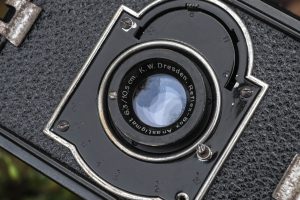
Upon taking the wet film out of the development tank, I could first see that the images all appeared to be properly exposed. It would seem that my choice of the faster speeds, combined with Ilford film and the scenes in which I used it, returned good images with nice contrast and depth.
After scanning however, I could clearly see that my fears of body shake were valid as nearly every image shows a sort of “double image” probably as a result of the jarring movement of the shutter each time I fired it. In hindsight, using this camera on a flat surface or with a tripod might have been a better choice as my attempt to stabilize the camera against my body wasn’t enough.
I also noticed that a couple images had light leaks, which I mentioned above are likely from the front seam which is very near where the film spools are located. This camera didn’t show any signs of being previously dropped or dented, but perhaps I should have taken my own advice and put a line of tape around the seam to prevent them.
With all of that out of the way, there is still enough left to make some conclusions about the Reflex-Box. The KW Reflex-Box Anastigmat f/6.3 lens on this example was the entry level lens available on this camera and it shows. Center sharpness is good, but the images get soft quickly as you get towards the edges. Vignetting is strong in every image I shot, suggesting the 10.5cm lens doesn’t quite have enough coverage for 6×9. I feel as though making this a 6×6 would have been a better choice, not only for better coverage, but the economy of getting 12 exposures instead of 8.
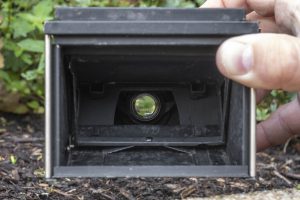
It’s not all bad though, as soft edges and vignetting is the exact kind of look people want in vintage images like this. Knowing the particular style of images the Reflex-Box is capable of, a better photographer than me could use this effect to his or her advantage, making “old timey” images with a look that a simple lens and an 85 year old camera can give.
Although the viewfinder was very dark, I did enjoy looking through it. I’ve used a number of 35mm and 6×6 cameras with waist level finders, but this is my first 6×9 camera with a waist level finder and seeing your images life size in such a large viewfinder is something to behold. I imagine that a fully restored Reflex box with a new mirror, faster lens, and perhaps even a more modern focusing screen would have breathtaking.
This particular KW Reflex-Box wasn’t in the best of shape and had a number of things working against it. I wonder what my results might have looked like with a better example that also had the upgraded f/4.5 Steinheil Actinar lens. If I ever get a chance to find out, I’ll definitely come back and update this review, but for now, I can at least say, the Reflex-Box is a cool camera with good looks and a unique operation. Having a large and life sized viewfinder in a camera with the simplicity of a box camera is definitely cool, so I feel safe in recommending this to anyone who has a chance to pick one up. Whether you plan on shooting it or putting it on a shelf, it makes a worthwhile addition to any collection. But if you do plan on shooting it, you’re going to want to stabilize it!
Related Posts You Might Enjoy
External Links
http://camera-wiki.org/wiki/Reflex-Box
https://www.35mmc.com/03/10/2020/kw-reflex-box-camera-history-review-by-dan-cuny/
http://www.earlyphotography.co.uk/site/entry_C53.html
https://www.collection-appareils.fr/x/html/camera-1682-KW_Reflex-box.html
http://forum.mflenses.com/kw-reflex-box-finally-returning-good-results-t66601.html
https://www.flickr.com/photos/tony_kemplen/sets/72157635954464226

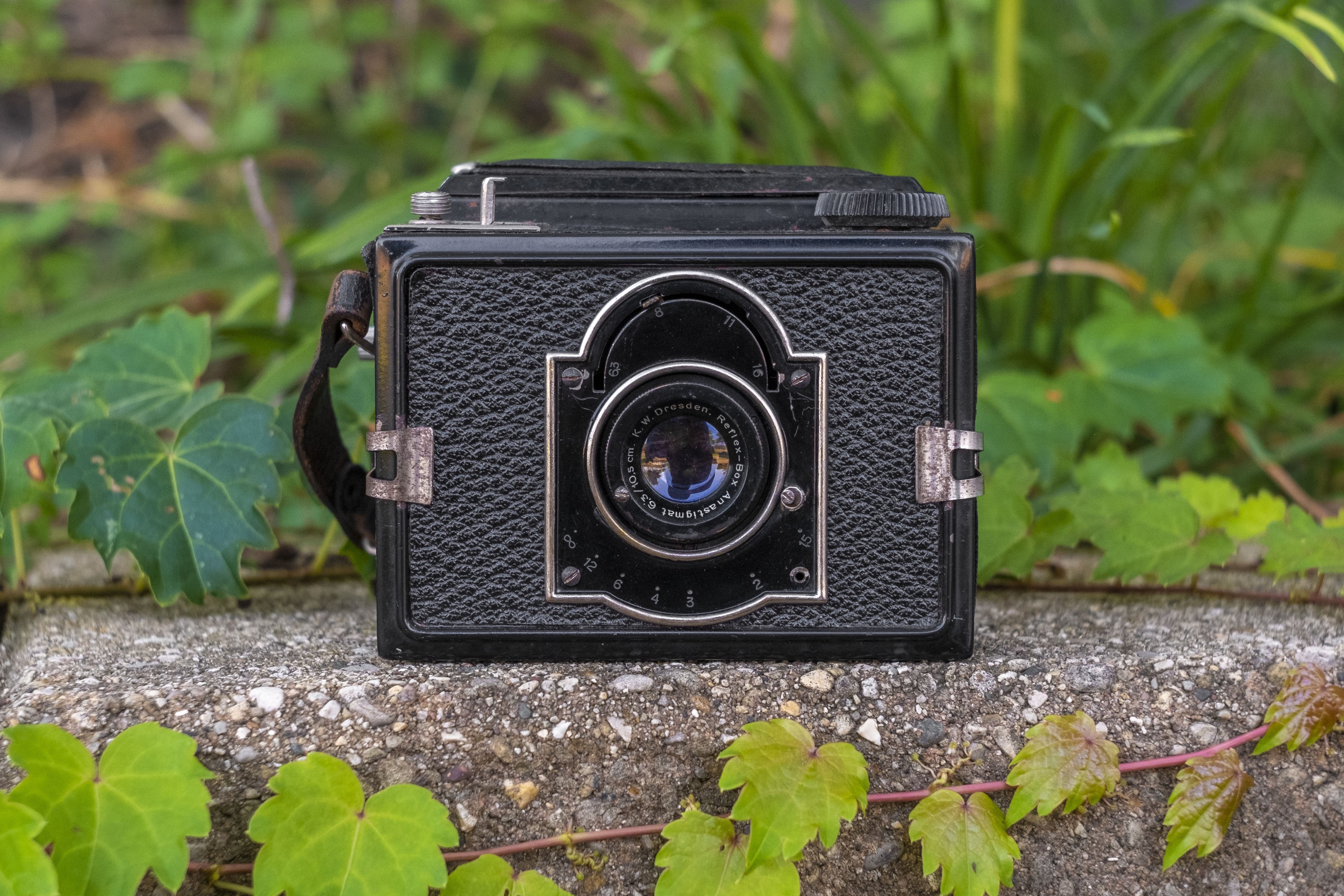
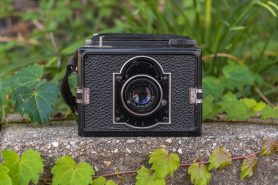
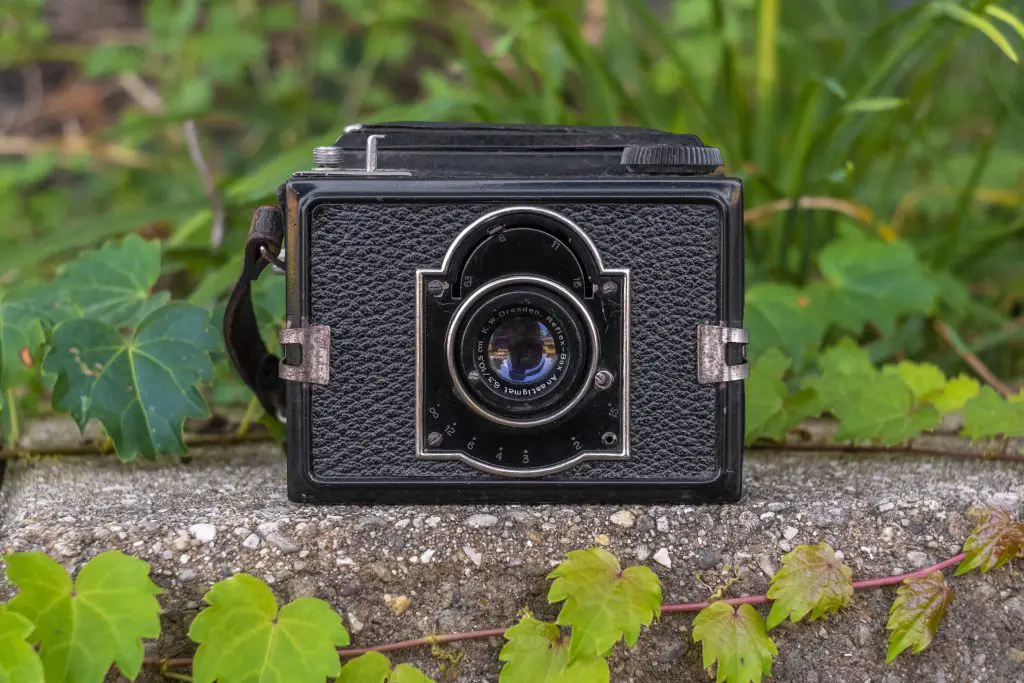



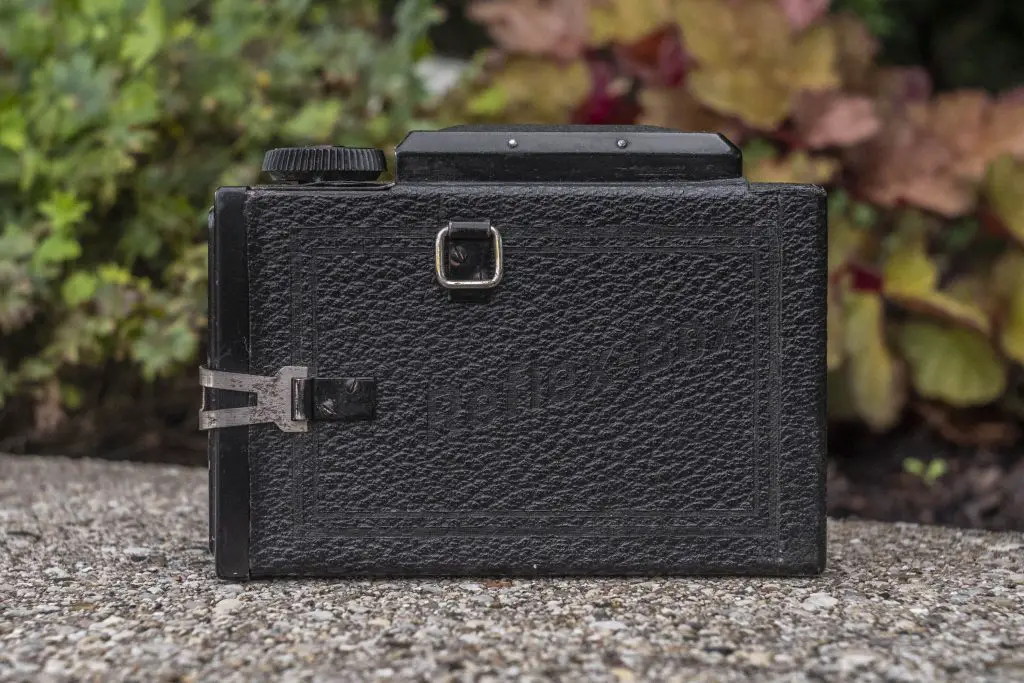
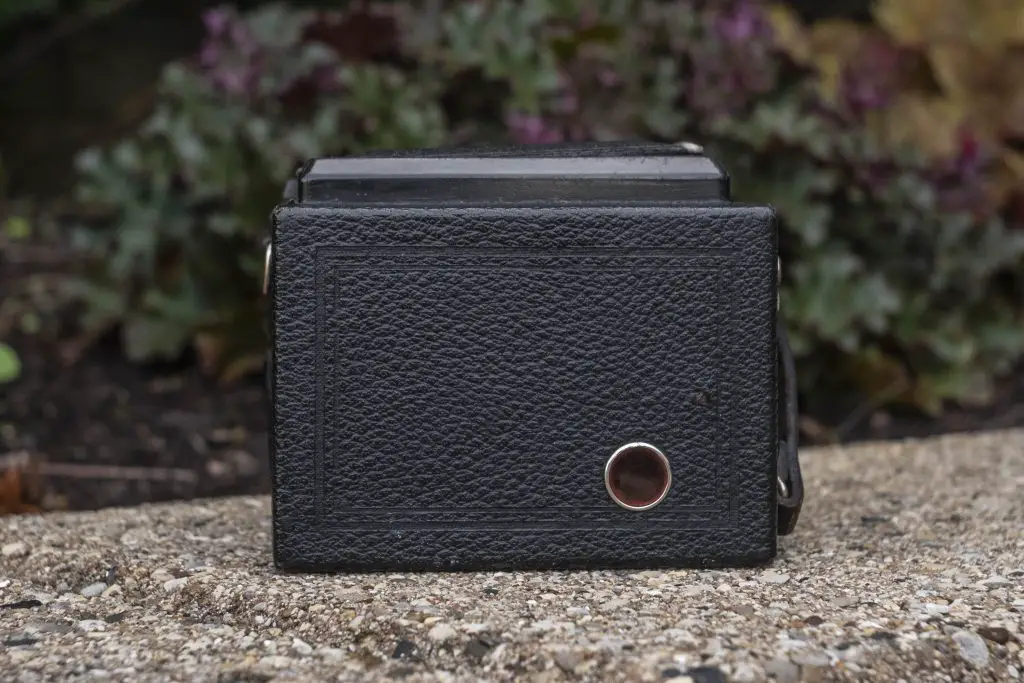
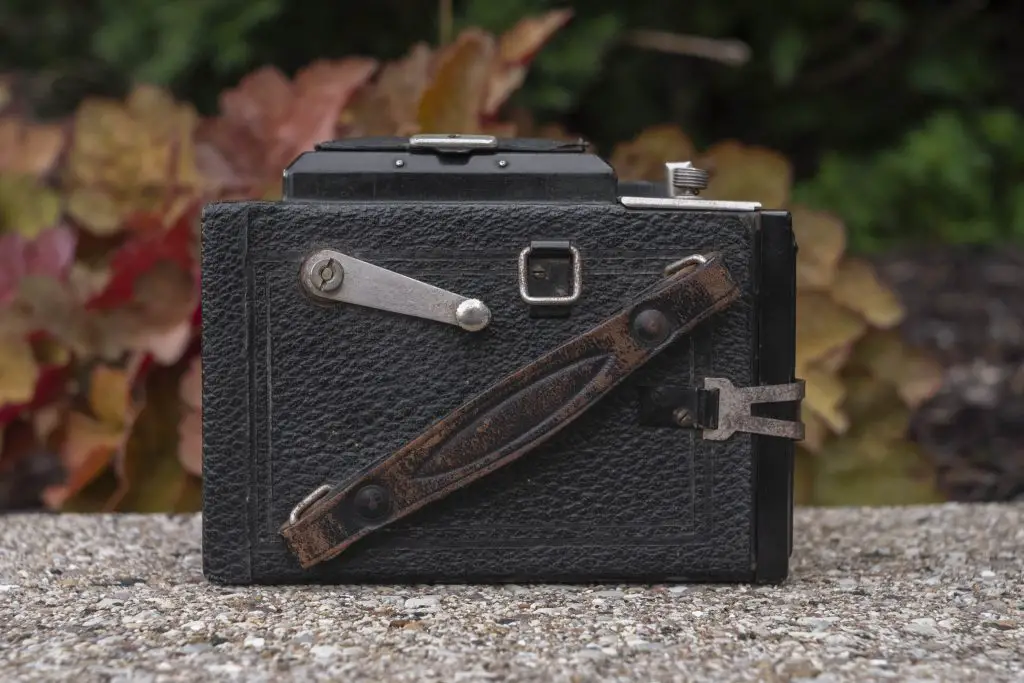







One cool camera, Mike! Is it safe to say the shutter works like an Exa, using the mirror to cap the film? Or is it a two-curtain focal plane device?
Yes, exactly like the Exa. The reflex mirror is part of the first “curtain” and a delayed second curtain follows behind it to finish the exposure. Such a simple, yet reliable design.
Nice review Mike; I have the Pilot 6 that I have shot once. The focus and shutter (which is the a similar mechanism to yours) worked well enough and the few shots I got looked nice apart from the marks the film transport left all over the negatives. It kept jamming too so haven’t done much with it since. I am sure a thorough service would resolve the transport issues but I haven’t had time to really look into that.
Another issue with the Pilots is that they were made with a thinner gauge steel than some other cameras of that era, and if mishandled or dropped in the 70-80 years since they were made, things can get warped causing light leaks, scratches, or other film transport issues. Good luck with yours though. They’re fun cameras to shoot, assuming you can get yours working.
I have the version with the Actinar 4.5 lens. I imagine that the viewfinder is a tad less dim, but it still seems really dim to me, particularly off center. You’ll never know what you’ll get in the corners. One of the two rollers next to the film plane moves around a bit, so one of the sides is less sharp than the other. If tried to get it to stay in place without much success. Other than that, it’s really easy to half open the camera by mistake, I think I’ll put an elastic band around it next time I load it. I used it with a relatively heavy tripod and was unable to detect any movement, so that’s a win. I want to try and do long exposures with it, where movement will be less of an issue. It is definitely a fun box camera and my only medium format slr. It’s fun to have one of the most basic cameras I have also be the closest thing I have to a Hasselblad.
The front clips holding the camera together certainly was precarious. I was actually surprised at how little light leaks mine had despite being in rough condition. Glad to hear you enjoy yours and while it’s a far cry from a Hasselblad, being able to see a lifesize 6×9 image on a waist level finder never gets old!